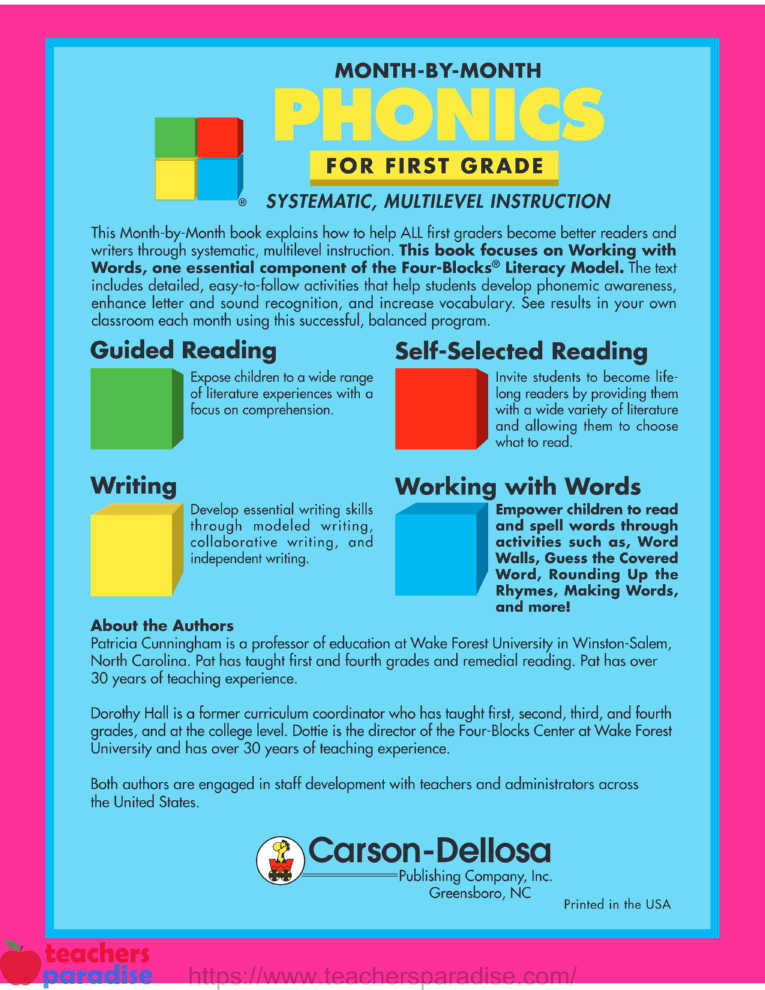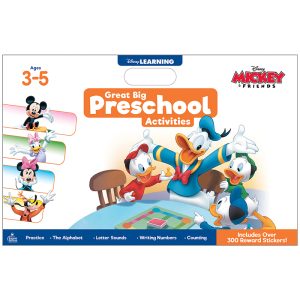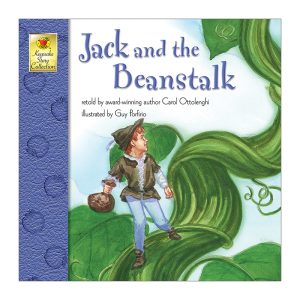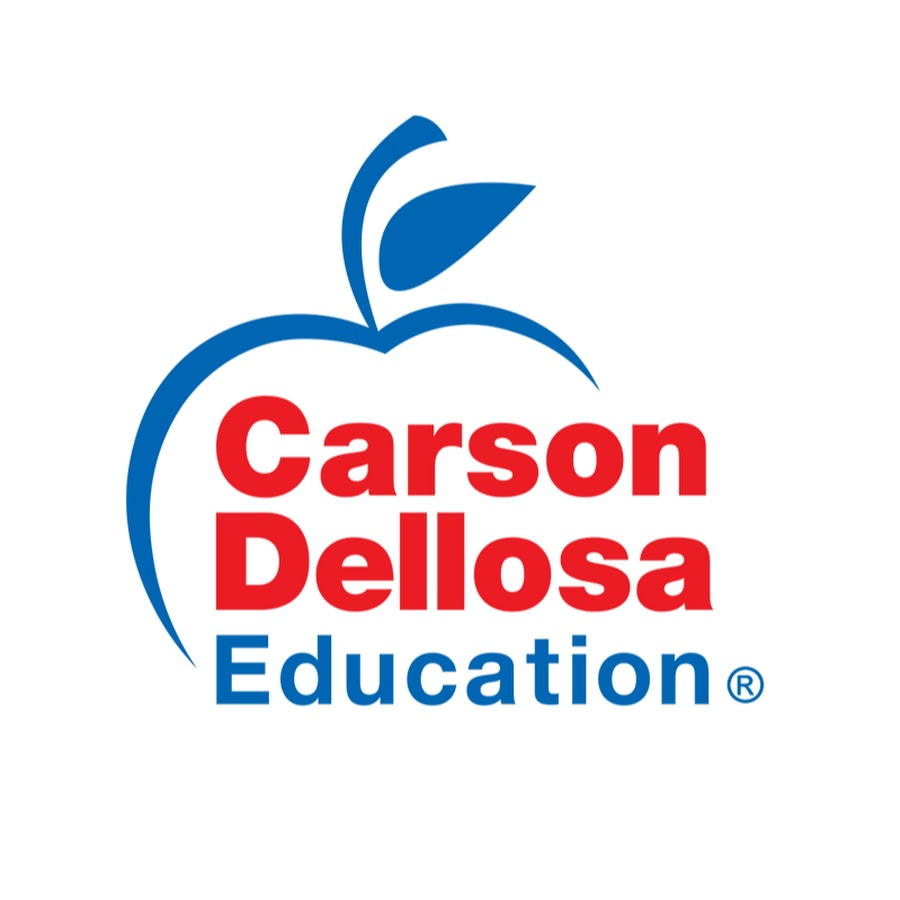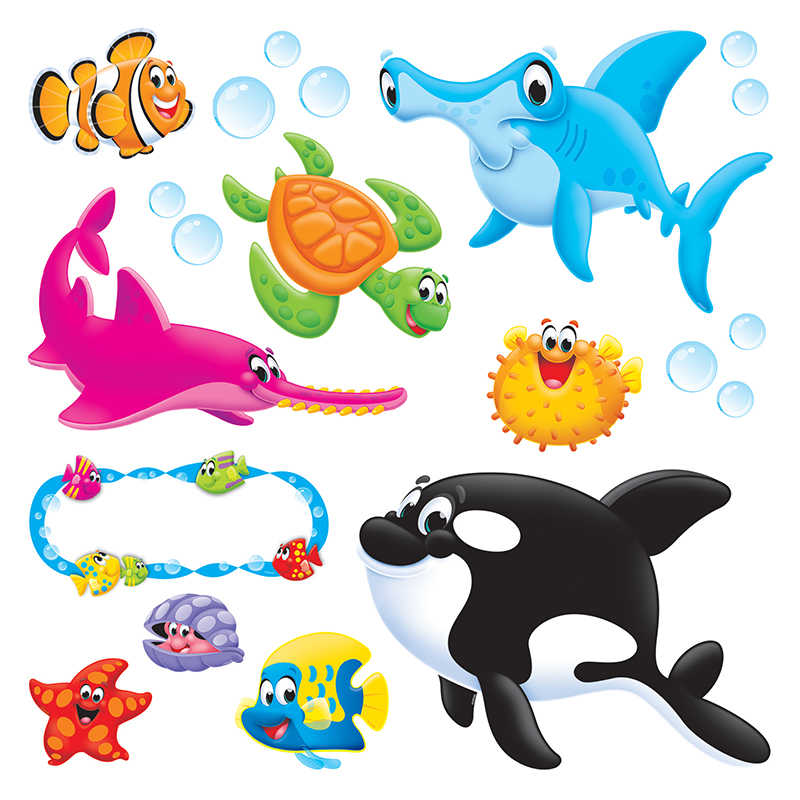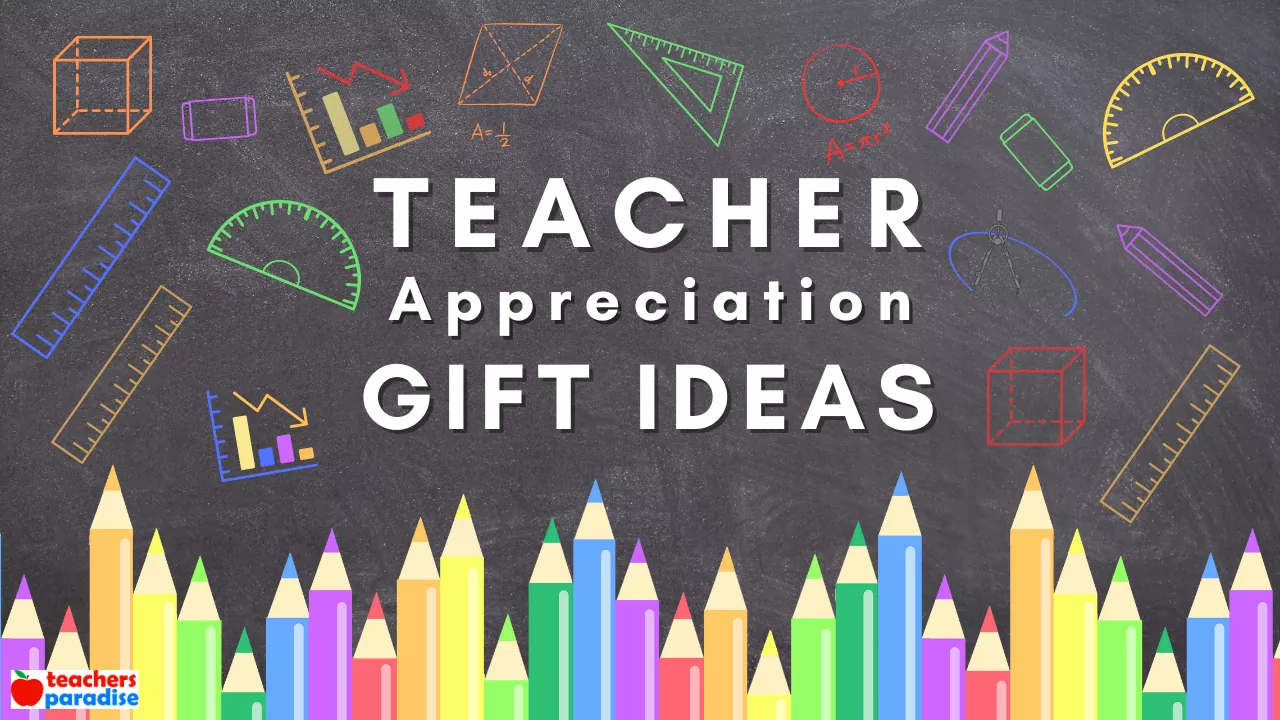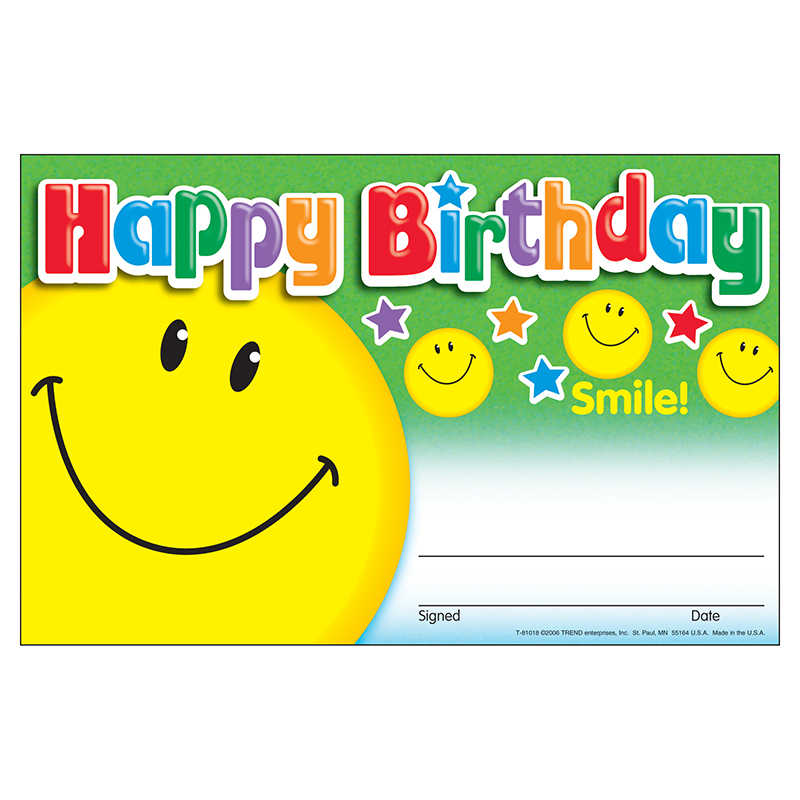First Grade Month-by-Month Phonics
This Month-by-Month book explains how to help ALL first graders become better readers and writers through systematic, multilevel instruction. This book focuses on Working with Words, one essential component of the Four-Blocks® Literacy Model. The text includes detailed, easy-to-follow activities that help students develop phonemic awareness, enhance letter and sound recognition, and increase vocabulary. See results in your own classroom each month using this successful, balanced program.
Guided Reading
Expose children to a wide range of literature experiences with a focus on comprehension.
Self-Selected Reading
Invite students to become lifelong readers by providing them with a wide variety of literature and allowing them to choose what to read.
Writing
Develop essential writing skills through modeled writing, collaborative writing, and independent writing.
Working with Words
Empower children to read and spell words through activities such as, Word Walls, Guess the Covered Word, Rounding Up the Rhymes, Making Words, and more!
More from Carson Dellosa
WORKSHEET & Sample PDF Activity
Sample PDF Activity
SYSTEMATIC, MULTILEVEL INSTRUCTION
AUGUST/SEPTEMBER – PHONEMIC AWARENESS:
CHANTING RHYMES AND SHARING RHYMING BOOKS
Children and rhymes just go together. Children love rhymes. They love to chant them and sing them and make them up. Most first-grade teachers have an amazing store of rhymes and fingerplays which just go with their units throughout the year.
Doing rhymes with children, however, is not just for fun! Rhyming activities develop one of the most critical concepts for success in beginning reading—phonemic awareness. Have you listened to kindergartners on the playground when they want to tease one another? What do they say? Often you hear chants such as Billy is silly; Saggy, baggy Maggie, etc. Making rhymes and playing with words is one of the most reliable indicators that children are getting control of language. They are becoming aware of words and sounds and can manipulate these to express themselves—and to impress others!
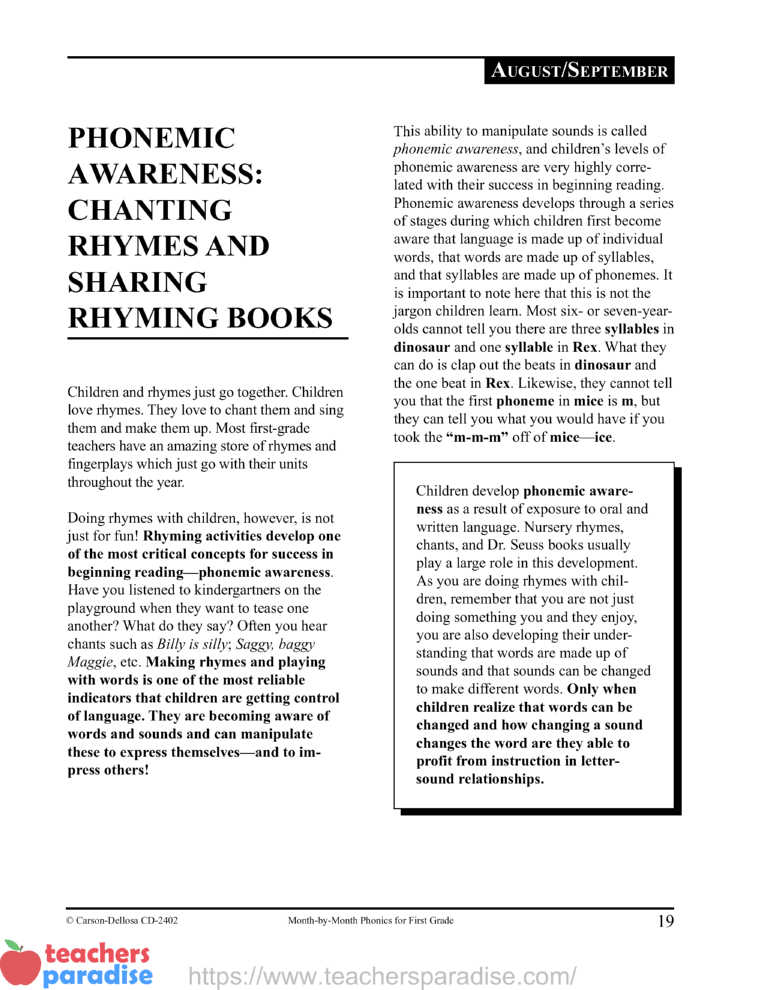
This ability to manipulate sounds is called phonemic awareness, and children’s levels of phonemic awareness are very highly correlated with their success in beginning reading. Phonemic awareness develops through a series of stages during which children first become aware that language is made up of individual words, that words are made up of syllables, and that syllables are made up of phonemes. It is important to note here that this is not the jargon children learn. Most six- or seven-year-olds cannot tell you there are three syllables in dinosaur and one syllable in Rex. What they can do is clap out the beats in dinosaur and the one beat in Rex. Likewise, they cannot tell you that the first phoneme in mice is m, but they can tell you what you would have if you took the “m-m-m” off of mice—ice.
DECEMBER – MAKING WORDS
If you started Making Words in November and did a number of lessons with five letters and just one vowel, the children are now probably ready to move on to lessons that have 5-8 letters, including two vowels. As you present these lessons you should do less cueing than you did in early lessons. For example, in early lessons, you may have said, “Change the last letter . . . .” As the students progress, they should be the ones thinking about what letter to change, and your direction should be limited to something such as, “Change just one letter . . . .”
Teaching a Sample Making Words Lesson
Step One—Making Words Here is an example of a great December lesson with six letters (two of which are vowels) as it is presented with less cueing:
The children have the letters: e, i, n, r, t, w
“Take two letters and make the word in. Say in with me.”
“Add a letter to make the three-letter word, tin. Some cans are made of tin. Let’s all say tin.”
“Now change the vowel and tin will become ten. You have ten fingers and ten toes. Say ten.”
“Move the letters in ten around to turn your ten into a net. He caught the fish in a net. Say net.”
“Now change just one letter and net can become wet. When it’s raining, you get wet. Say wet.”
“The last three-letter word we’ll make is win. Will he win the race? Say win.”
“Now we are going to make some four-letter words. Hold up four fingers. Add one letter to win and you will have twin. My friend has a twin sister. Stretch out the word twin and listen to the sounds you hear yourself saying.”
“Take all of your letters out of your holder and start over. Make another four letter word—went. We went swimming today. Everyone say went.”
“Now change just one letter and went can become rent. I paid the rent. Let’s all say rent.”
“The next one is a four-letter word but only has three letters that you can hear. Make tire. My bike had a flat tire. See if you can figure out what letter is in the word tire but isn’t heard when you say the word. Let’s all say tire.”
“Now change just one letter and tire can become wire. Find the yellow wire. Say wire.”
“Now let’s make a five-letter word. Hold up five fingers! Use five letters to spell twine. Twine is a heavy string we use to tie things. Everyone say twine and stretch out the sounds.”
“Has anyone figured out the secret word?” (Give children one minute to try to make the word.) “The secret word is winter. Winter starts in December. Use all of your letters to make winter. Say winter and stretch it out so you can hear all of the letters.”
Step Two—Sorting Words
After the children have made the secret word, have them use the large word cards to sort for a variety of patterns. Begin with the word win and have them find the other words that begin with w—wet, went, wire, and winter. As each word is identified, let a child place the word card in the pocket chart.
Now place the card with the word tin in the pocket chart and have students find the other words that begin with t—ten, twin, tire, and twine. Separate the t words into two groups—one with tin, ten, and tire, and the other with twin and twine. Have students notice that twin and twine begin with tw and that if you stretch the words out you can hear both letters.
Next help them to sort the words into rhymes:
in net rent tire
tin wet went wire
win
twin
Step Three—Transferring Words
Remind the children that knowing some words can help them read and spell the rhyming words. Write a few words and have children use the rhymes they have already sorted to decode them:
fire jet
Say a few words that rhyme with the sorted words and have students decide how they would spell the words you said:
tent pin
More Making Words Lessons:
Here are a few other seasonal lessons that are progressively more challenging. The first lesson has five letters with only one vowel, the next two lessons have seven letters with two vowels, and the last lesson has eight letters with two vowels.
Letters: i f g s t
Make: if is it sit fit fits fist sift gift gifts
Sort for: s f; -it -ift
Transfer Words: lit sit lift shift
Letters: e e n p r s t
Make: net pet pets pest nest rest rent sent
spent enter pester present (and serpent)
Sort for: n p r; -et -est -ent pest-pester
Transfer Words: wet west went tent
Letters: a e c d l n s
Make: as an can Dan and sand land clan clean
dance dances cleans candle candles
Sort for: c cl; -an -and; s pairs
Transfer Words: band man than hand
Letters: i o c g k n s t
Make: is it in ink sink sing song king tick sick
sock stock sting stink stocking
Sort for: s st; -ink -ing -ick -ock
Transfer Words: pink wing shock chick
FEBRUARY – GUESS THE COVERED WORD
The year is more than half over and you might be tempted to stop doing Guess the Covered Word activities because many of your students know most of the beginning sounds in words. But, as we discussed in the January chapter (pages 68-75), children don’t know something until they use it in their reading and writing.
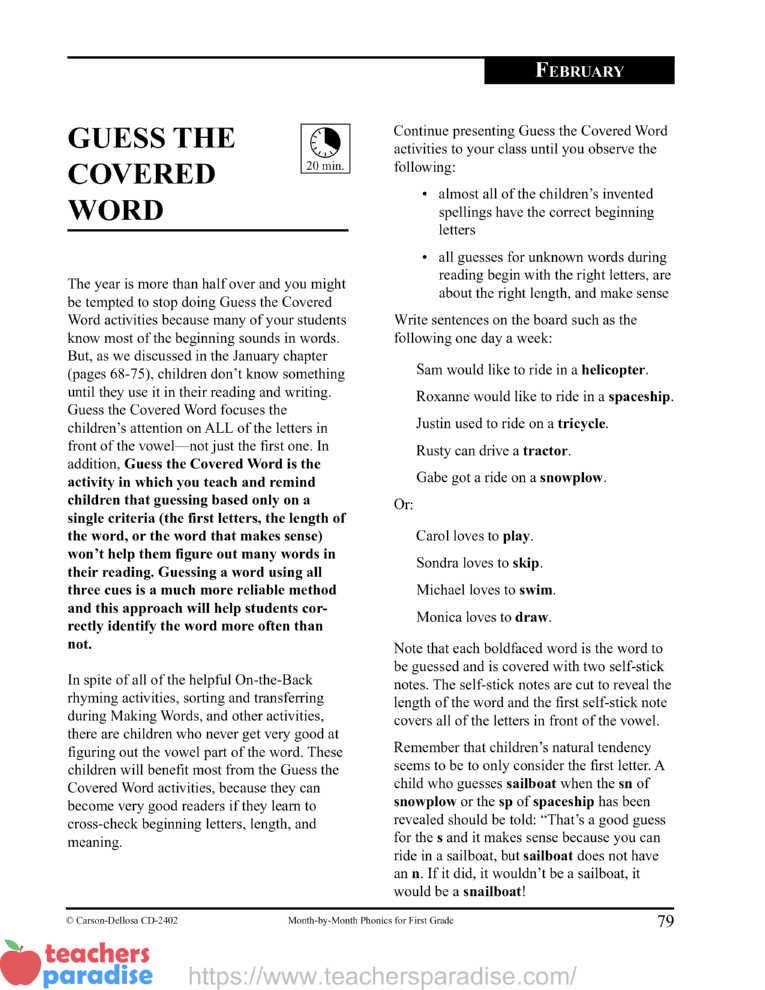
Guess the Covered Word focuses the children’s attention on ALL of the letters in front of the vowel—not just the first one. In addition, Guess the Covered Word is the activity in which you teach and remind children that guessing based only on a single criteria (the first letters, the length of the word, or the word that makes sense) won’t help them figure out many words in their reading. Guessing a word using all three cues is a much more reliable method and this approach will help students correctly identify the word more often than not.
In spite of all of the helpful On-the-Back rhyming activities, sorting and transferring during Making Words, and other activities, there are children who never get very good at figuring out the vowel part of the word. These children will benefit most from the Guess the Covered Word activities, because they can become very good readers if they learn to cross-check beginning letters, length, and meaning.
Continue presenting Guess the Covered Word activities to your class until you observe the following:
• almost all of the children’s invented spellings have the correct beginning letters
• all guesses for unknown words during reading begin with the right letters, are about the right length, and make sense
Write sentences on the board such as the following one day a week:
Sam would like to ride in a helicopter.
Roxanne would like to ride in a spaceship.
Justin used to ride on a tricycle.
Rusty can drive a tractor.
Gabe got a ride on a snowplow.
Or:
Carol loves to play.
Sondra loves to skip.
Michael loves to swim.
Monica loves to draw.
Note that each boldfaced word is the word to be guessed and is covered with two self-stick notes. The self-stick notes are cut to reveal the length of the word and the first self-stick note covers all of the letters in front of the vowel.
Remember that children’s natural tendency seems to be to only consider the first letter. A child who guesses sailboat when the sn of snowplow or the sp of spaceship has been revealed should be told: “That’s a good guess for the s and it makes sense because you can ride in a sailboat, but sailboat does not have an n. If it did, it wouldn’t be a sailboat, it would be a snailboat!
